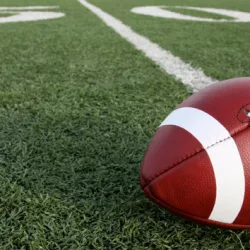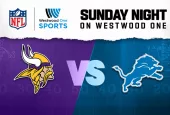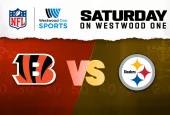
(NEW YORK) – The grass may be greener if it’s made of synthetic turf, but some communities are raising concerns about “forever chemicals” that may be found in many of the faux fields.
“Think about the wisdom of putting down acres of plastic in the year 2024… and then allowing athletes to go play on that for hours a week,” Dr. Kyla Bennett, director of science policy for advocacy group Public Employees for Environmental Responsibility (PEER), told ABC News.
“To me, it doesn’t pass the straight-face test,” she said.
A number of synthetic turf fields in use today are believed to be made with plastic that may contain chemical substances perfluoroalkyl and polyfluoroalkyl, known as PFAS, according to advocates and industry specialists. However, the percentage of synthetic turf fields made with these chemicals already installed or being manufactured for the future is unknown.
PFAS are a class of over 12,000 manufactured chemicals that have been used in industry and consumer products since the 1940s, according to the Environmental Protection Agency. They are known as “forever chemicals,” because they break down very slowly.
In a June 2023 letter, Synthetic Turf Council president and CEO Melanie Taylor said the industry needed until 2026 – “in line with other PFAS legislation currently pending” to “develop viable alternatives for the marketplace” without PFAS chemicals.
“We are concerned that trace quantities of a chemical may be present in natural or synthetic ingredients, recycled content, manufacturing processes or equipment,” Taylor said.
In addition to synthetic turf, PFAS can be found in drinking water, food, cleaners, textiles, paper, paints, fire-fighting foams, wire insulation and more, according to the EPA, which notes some of these chemical compounds can accumulate and stay in the human body for long periods of time.
Many industries are attempting to remove PFAS from their products. In February, the FDA announced that after a four-year commitment, food packaging in the U.S. no longer includes PFAS for grease proofing, “This means the major source of dietary exposure to PFAS from food packaging like fast-food wrappers, microwave popcorn bags, take-out paperboard containers and pet food bags is being eliminated.”
The health risks of forever chemical accumulation in the body are still uncertain and could include a higher risk of cancer, liver damage, fertility issues or asthma, according to the EPA.
However, there are known risks associated with ingestion or inhalation — It’s not clear if there are significant health risks from touching them.
Some communities are concerned amid the uncertainty.
“Parents should not have to have a Ph.D. in analytical chemistry, to send their kids out to play on what they presumed to be a safe field,” Dianne Woelke, a board member for Safe Healthy Playing Fields, Inc., an all-volunteer advocacy group, told ABC News.
“They assume that these chemicals have been proven to be safe, and they absolutely have not,” she claimed.
In 2016, the EPA launched an investigation into the chemicals found in recycled tire crumb, a component of some synthetic turf and what, if any, human exposure might occur during contact with turf fields. The results of this investigation are still pending, but regardless of their findings, the agency states that its report should not be interpreted as a risk assessment and cannot determine levels above which health effects could occur.
PFAS chemicals are widely used to help with the molding and extrusions of plastic, which is often seen in synthetic turf, according to the Journal of Vinyl and Additive Technology.
Hailed by some proponents as the antidote to the effects of climate change, synthetic turf offers what is believed to be a no-water-necessary, durable and fertilizer-free option for athletic fields at every level.
Synthetic turf was first installed in a major sporting venue at Houston’s Astrodome in 1966. More than 50 years and several variations of synthetic turf later, thousands of recreational and professional-level fields across the country removed natural grass in favor of synthetic turf.
“Communities, schools, businesses and families across the country are choosing synthetic turf because of the significant benefits it offers, being accessible year-round, being more affordable to maintain, and protecting the environment through reduced water and chemical use,” Synthetic Turf Council president Melanie Taylor told ABC News in a statement. “The synthetic turf industry is proud to deliver quality products that make a positive difference and are used by thousands of communities nationwide.”
According to the Synthetic Turf Council, there are between 12,000 and 13,000 synthetic turf sports fields in the United States, with approximately 1,200 to 1,500 new installations each year.
Copyright © 2024, ABC Audio. All rights reserved.









